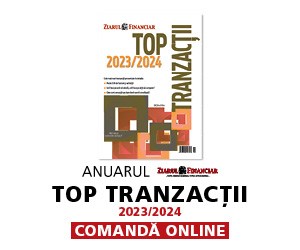Owing only to a small extent to a change in the structure of output, and therefore in the supply on foreign markets, the rise in exports early this year is rather circumstantial and not a real prelude for durable growth. Despite those frail signs, we are yet to break away from the past.
The post-December period has brought changes into the structure of exports that must be judged qualitatively and not quantitatively. Taking 1993 as the reference year, when the economy and foreign trade settled after the enormous shock caused by the loss of politically secured markets in the former COMECON space, a few structural tendencies can be traced.
For easier analytical delimitation, exports are rated as "bad" and "good," and there are few instances of the latter.
First of all, there is the growth in electronics exports, from 9% in 1993 to 11.8% in the first five months of 2000.
Second, there is the drop in mineral exports (fuels, oils and others) from 11.7% to 5.9% in 1999. These energy-intensive products do not even incorporate energy from internal resources, but imported energy.
Inherited from communist times, oil products, most of the times to the detriment of domestic supplies, refined from imported crude, have been the worst financial venture possible, and at last it was downsized. Unfortunately, and worryingly, these exports were again on the rise, in the first months of this year, growing to an 8.3% share of the total.
Other two tendencies - the drop in exports of chemicals and common metals - would have been strictly positive had they been accompanied by a rise in exports of plastics and processed metal products, which, unfortunately, did not happen. Overall, this affected 10% of the exports structure.
As for the rest, there are nothing but "bad" tendencies: raw wood exports grew, while exports of furniture, vehicle and vegetal products dropped severely. These developments affected more than 12% of the exports structure. Add the arch-controversial growth of lohn exports in the textile and skin industries (which use imported raw materials), the Romanian contribution was only cheap labour, and these rather negative tendencies have altered more than 26% of the exports structure.
Essentially, it can be said that, before '89, Romania's exports structure apparently was more modern than today. The "modern" share of exports was larger than now. This is how things stood quantitatively. But qualitatively, the appreciation must be amended with the absolutely remarkable realisation that the bulk of exports have been shifted from East-European and Asian markets into Western Europe. This shift was almost exclusively due to the "non-modern" component. In the past, the "modern" component used to be placed only on undemanding markets (COMECON or underdeveloped countries).
After 1990, this component could not be switched to West-European markets, for reasons of quality and competitiveness, and was largely lost. The penetration of developed countries solely with the "non-modern" component unveiled and emphasised Romania's condition as a peripheral economy, causing uncertainty over its capacity to retain even its present status, however marginal, which it acquired on these markets.
In any case, with exports gripped as they are, there is no real prospect for long-term expansion. Only a new structure of the export range would secure a base for expansion, but this can only happen in a gradual and lengthy process of domestic and foreign investments in Romania.
For this year, an exports growth in excess of 10% is almost certain, given the almost 30% rise in the first five months. The problem - the big problem - is what will happen next year, when, irrespective of a stimulating exchange rate and tax facilities for exports-related profit, exports will have no more room to broaden, unless their offer is renewed.
To be completely realistic, exports are today the one straw Romania can clutch to for a change of economic perspective. And, whether good or not, this straw must be used to attempt a change. But we must be aware that exports, in their present structure, are not the key to resolving the Romanian economy's problems.
Pentru alte știri, analize, articole și informații din business în timp real urmărește Ziarul Financiar pe WhatsApp Channels










































